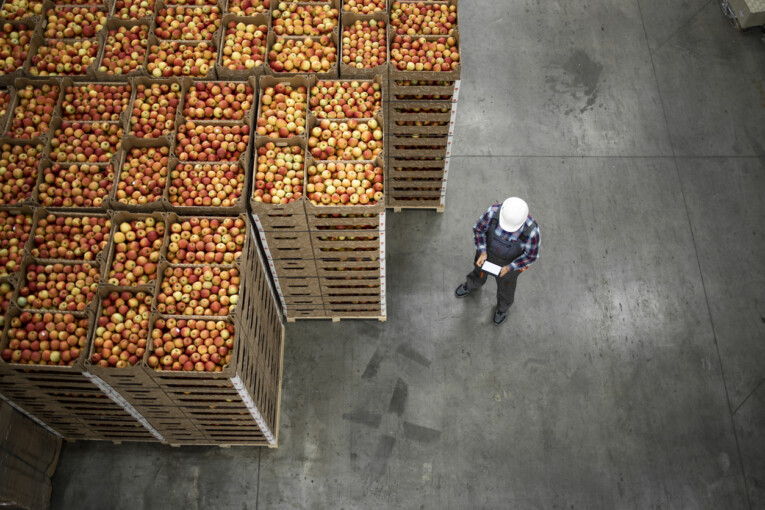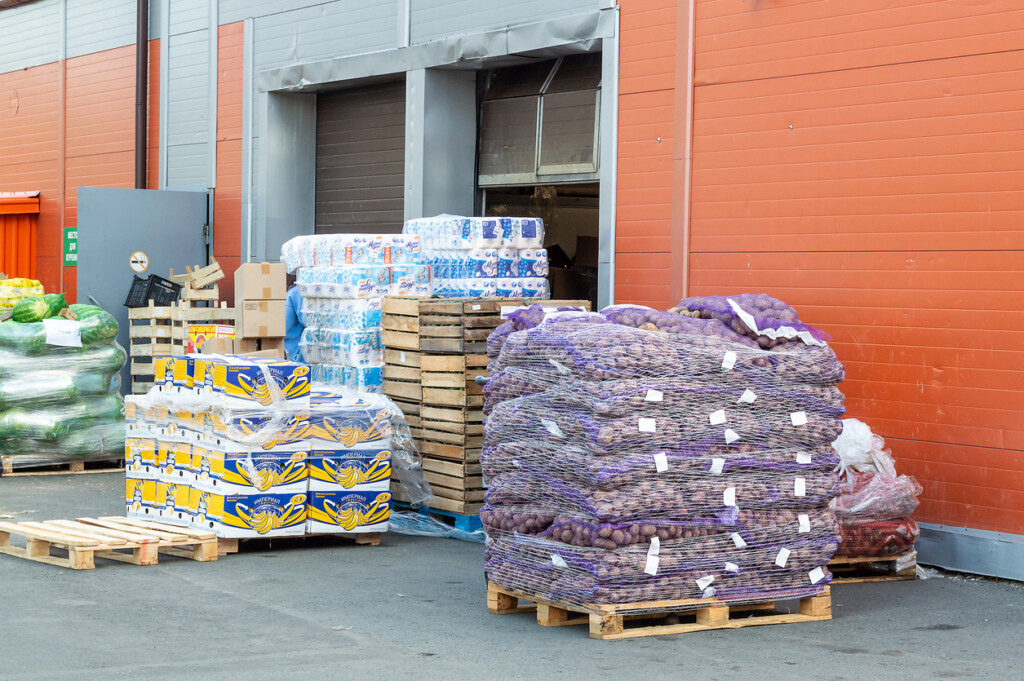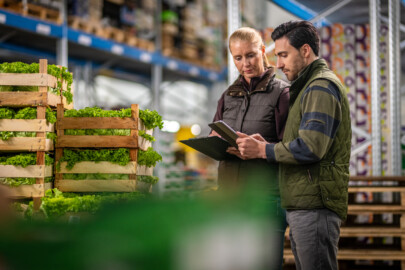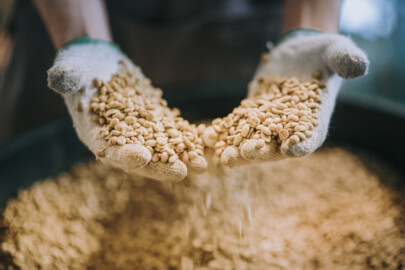Our nation is getting healthier, at least as far as consumer buying trends are concerned. For the past three decades, the organic food industry has steadily gained market share, culminating in a period of rapid growth during the COVID-19 pandemic. In 2019, for example, the organic sector grew by a staggering 12.8% to become a $52 billion dollar industry.
Fast forward to the here and now, where a Hartmann Group study shows an estimated 83% of all Americans incorporate some type of organic product during mealtimes. Organic food is big business, but delivering those products to the consumer’s table is nothing if not tricky. Today, we’ll take a look at the process of organic food certification, including the steps —and considerations — necessary to distribute organic products.
What is Organic Food Production?
Walk down the aisle of your favorite supermarket and take a minute to read the labels. Chances are, no matter what aisle you choose, you’ll come across food labeled as “USDA Certified Organic.” In fact, many of those same stores have even begun curating their very own organic-only sections. But with so many choices on the table, it’s common for the average consumer to be dismissive of the movement, labeling it as nothing more than a marketing ploy. So what exactly defines an organic product?
An item that is organically produced must satisfy a number of federal thresholds in order to earn the organic label. In turn, those federally imposed benchmarks are the result of numerous factors, including:
- The quality of soil in which the item was grown
- The use of fertilizers, pesticides, and other chemicals used in the growing process
- The use of chemical additives, such as preservatives, in preparation for packaging and shipping
- The method of animal care used to raise livestock
Of course, the above list is far from inclusive. The bottom line is that in order to be considered “organic,” a food item must be raised, grown, or created in as natural a way as possible.
What are the Requirements for Organic Food Certification?
There are, of course, certain concrete processes and benchmarks a food item must cleave in order to obtain the coveted label. According to the US Department of Agriculture (USDA), in order for an item to be considered organic, the business must:
- Create a plan for organic growth
- Put that plan into practice
- Allow an accredited agent to inspect the process
- Obtain a report grading their organic production practices
Once all these steps have been satisfied, the business may apply for a USDA-approved organic label for their products. The bottom line is that organic products do not use chemicals in their production cycle and that the production cycle is subject to rigorous scrutiny from both state and federal agencies.
An authority on the topic, Jaclyn Bowen MPH, MS, Executive Director of Clean Label Project, also points out the following nuances of organic food certification, “Oftentimes, many think that warehouses are exempt from USDA National Organic Program compliance. According to USDA National Organic Program 205.101, operations or portions of operations that sell packaged or otherwise enclosed in a container prior to being received or acquired by the operation are exempt. However, what many operators fail to do is read on. According to section 205.101, these operations are NOT exempt from the requirements for the prevention of commingling and contact with prohibited substances as set forth in 205.272. Additionally, section 205.101(c) states that EVEN these “exempt” operations “must maintain records sufficient to prove that ingredients identified as organic were organically produced and handled and verify quantities produced from such ingredients. They must also maintain records for no less than 3 years beyond their creation and the operations must allow representatives of the Secretary and the applicable State organic programs’ governing State official access to these records for inspection and copying during normal business hours to determine compliance with the applicable regulations set forth in this part.”
“With all the work that goes into making an organic product, it’s nice to have that peace of mind when it comes to ensuring that your certified organic product remains a certified organic product. As a small or mid-sized scaling brand, don’t take the risk.”
Jaclyn Bowen MPH, MS, Executive Director of Clean Label Project and former General Manager of QAI
Safety and Security Throughout the Supply Chain
Now that we have the basic definitions out of the way, how do we take the idea of organic processes one step further by integrating it with product distribution? While the title “organic” has traditionally been used to denote the growing procedures associated with livestock and ingredients, It’s important to note that contemporary definitions have expanded to include packaging, warehousing, and shipping methods as well. In other words, the organic moniker includes all the processes meant to sustain a product’s purity throughout its lifecycle.
Below, we’ve compiled a small list of essential practices for 3PL providers who wish to enter the organic business.
Be aware of the cost and effort of your initial certification
When a farmer or other business launches their initial application to list products as “certified organic,” it is time-consuming and includes costly application fees. For a farm to be considered an organic producer, it must be pesticide-free for at least three years prior to the initial application. Warehousing and distribution are similarly regulated.
Experts in the field, like Jaclyn Bowen with the Clean Label Project can assist with ensuring organic integrity within a warehouse operation. Industry leaders, such as Symbia Logistics, have taken steps to ensure that their supply chain management ensures the safety of their customers’ products.
Maintaining organic shipping, warehousing, and distribution practices
At this point, you may be asking yourself, “How can shipping and warehousing procedures affect the purity of an organic product?” The unfortunate answer? Quite easily.
For starters, there’s the danger that certain constituent materials —such as feed for livestock or specialized organic fertilizers— may be mislabeled and missorted. As a result, they may be stored with non-organic items soaked in pesticides while in transit, thus causing cross-contamination. Or they may be subject to processes and procedures that introduce additives for freshness during shipping. Any number of scenarios may happen.
Being an organic 3PL provider means brokering in precision, from packaging to inventory management and beyond.
Maintaining transparency
To that effect, transparency in your process is one of the most important qualities an organic logistics provider can hope to foster. Seeking organic certification is a matter of creating parallel shipping and warehousing procedures. That means for the sake of both safety and clarity, you must maintain separate inventory tracking for each category. While this can be cumbersome, that level of clerical precision is necessary to satisfy both:
- The companies whose products you distribute
- The end consumer
You have to be able to justify your policies and procedures to all applicable licensing bodies as well as the public itself.
Mind the packaging and prep
Hands down, the most important aspect of maintaining an organic distribution process is monitoring your processing, packaging, and shipping procedures. Over the last century, scientists, businesses, and even the end consumer have grappled with a difficult truth: the chemicals in packaging and packing materials are not passive materials. Packaging, especially types made of plastic, can seep chemicals onto the contents within, thus disrupting the purity of organic products.
While not all packaging is harmful, logistics professionals must take a long, hard look at their distribution procedures to ensure that consumer safety remains a top priority AND that the quality of their customers’ products is preserved.
Invest in the Right 3PL Partner With the Right Tools
Logistics professionals deal with a lot of moving pieces on a regular basis. How do you keep those pieces working for the common good of your company and your customers? It helps to understand the underlying philosophy behind organic products, including safe and secure distribution. It also helps to have the right tools and partners to help you keep track of it all. You’ll need an agile warehouse management system as well as updated policies and procedures.
Unsure where to start? Symbia Logistics can help. Please contact us today to begin.








